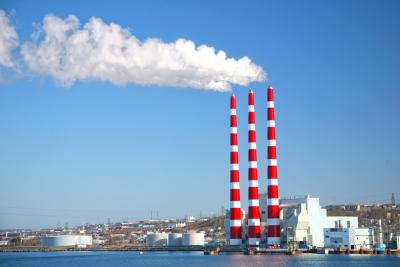
 |
| Reviews and Templates for Expression We |
The dark side of solar: Why waste concerns abound

Clean technology investments in emerging markets in Sub-Saharan Africa, Latin America and China are estimated to exceed $6 trillion over the next decade, according to a recent report (PDF) by infoDev/World Bank Group. Much of this can be attributed to the fact that, for the nearly 1.3 billion people around the world lacking access to an electricity grid, clean technologies such as off-grid solar devices quickly are becoming a popular alternative to more expensive and polluting fuels such as kerosene, wood and coal.
In Malawi, 80 percent of the population lives off the grid in rural areas and people must walk more than a mile from their villages to local townships to access electricity. Reliance on conventional fuels such as kerosene also contributes to health problems and poverty in developing regions. Typical households use 20 percent of their incomes burning kerosene for lighting, which also emits noxious black smoke, according to SolarAid.
Solar lights cost as little as $10, pay for themselves after 12 weeks and last for five years — while producing zero adverse health effects. Off-grid solar devices make it easier for people to do everything from cooking to charging their cell phones. Use of solar technology will become more common as it becomes cheaper and organizations such as the International Renewable Energy Agency work to develop the Africa Clean Energy Corridor to help the continent to rapidly adopt renewable energy.
But there is a catch. Because developing regions tend to lack solid waste disposal infrastructures, devices that no longer function typically are burned or discarded into the environment. With little political will or economic capacity to build conventional solid waste infrastructures in these areas, this conundrum will need to be solved at the “front end” through safer, more sustainable and more recyclable designs and materials, as well as by developing alternative waste management strategies.
San Francisco Bay Area-based non-profit Silicon Valley Toxics Coalition (SVTC) is attempting to do just that, drawing on its experience in electronics and solar sustainability to promote the market expansion of off-grid solar products, while also developing practical solutions to the recycling and reuse of these devices. The Sustainable Off-Grid Solar Recycling Incubator will partner with African communities, university researchers and students, as well as off-grid solar lighting companies to promote product innovation and sustainability. This pilot project also will develop innovative waste management systems that attempt to leapfrog over the need to build expensive conventional waste collection infrastructure and can be replicated in communities around the world.
partner with African communities, university researchers and students, as well as off-grid solar lighting companies to promote product innovation and sustainability. This pilot project also will develop innovative waste management systems that attempt to leapfrog over the need to build expensive conventional waste collection infrastructure and can be replicated in communities around the world.
The Global North has much to learn from these efforts as it deals with its own solar waste problems. Spurred by government subsidies, the millions of solar panels created each year is resulting in millions of pounds of polluted sludge and contaminated water, according to a 2013 Associated Press investigation. Although larger, more established solar companies usually have the resources to invest in on-site waste treatment equipment that allows them to recycle some waste, newer companies often send hazardous waste hundreds, and sometimes thousands of miles to be processed.
Nowhere is this more evident than in the solar fiefdom of California — from 2007 through the first part of 2011, some 17 companies with 44 manufacturing facilities in California produced 46.5 million pounds of sludge and contaminated water, the AP investigation found. Around 97 percent of the sludge was taken to hazardous waste facilities throughout the state, but more than 1.4 million pounds were transported to nine other states: Arkansas, Minnesota, Nebraska, Rhode Island, Nevada, Washington, Utah, New Mexico and Arizona.
But the transport of waste is not being factored into solar companies’ carbon footprint scores, which can lead to inaccurate life cycle analyses of the global warming pollution that goes into solar production. According to a researcher AP interviewed, transporting 6.2 million pounds of waste by heavy-duty tractor-trailer from Fremont, Calif., in the Bay Area, to a site 1,800 miles away could add 5 percent to a particular product's carbon footprint. After installing a solar panel, it takes one to three months of generating electricity to pay off the energy invested in driving hazardous waste emissions out of state.
 It’s important to note that although much of the waste produced is considered toxic (in the form of carcinogenic cadmium-contaminated water), there is no evidence it has harmed human health. Conversely, energy derived from natural gas and coal-fired power plants creates more than 10 times more hazardous waste than the same energy created by a solar panel. Although the U.S. solar industry has been dutiful about reporting its waste and sending it to approved storage facilities, coal-fired power plants send mercury, cadmium and other toxins directly into the air, which pollutes water and land around the facility.
It’s important to note that although much of the waste produced is considered toxic (in the form of carcinogenic cadmium-contaminated water), there is no evidence it has harmed human health. Conversely, energy derived from natural gas and coal-fired power plants creates more than 10 times more hazardous waste than the same energy created by a solar panel. Although the U.S. solar industry has been dutiful about reporting its waste and sending it to approved storage facilities, coal-fired power plants send mercury, cadmium and other toxins directly into the air, which pollutes water and land around the facility.
All said, solar production is still significantly cleaner than burning fossil fuels. But this doesn’t mean we can overlook the negative environmental impacts. Waste is a complex conversation, but it is one we need to be having. Transparency is key — but this will get more complicated as solar panel manufacturing moves from the U.S. and Europe to less regulated places such as China and Malaysia. Just as we look to preempt the adverse environmental side effects of solar in the developing world by rethinking design and materials, so should we be doing this at home. We also would do well to look at the lessons of Silicon Valley’s environmental problems caused by the electronics industry in the early 1980s and put in place the processes that will make sure history doesn’t repeat itself.
|
|
|
|
Copyright 2011 Energy and Technical Services Ltd. All Rights Reserved. Energyts.com |